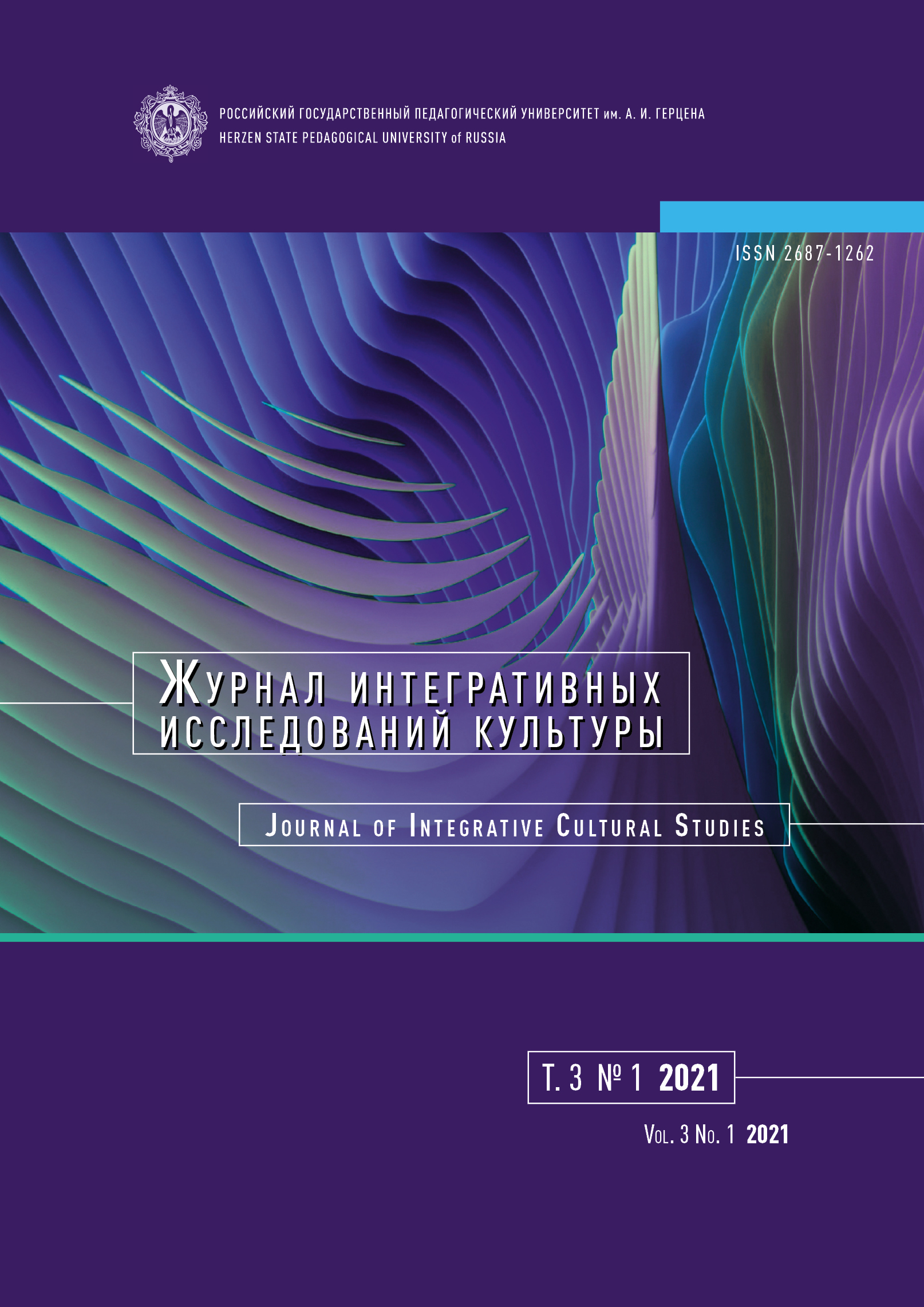Material culture as a design and functional organoprojection
DOI:
https://doi.org/10.33910/2687-1262-2021-3-1-14-23Keywords:
material culture, things, values, benefits, functions, goals, means, organoprojection, designAbstract
The article defines the specifics and structure of things as a type of cultural artefacts. The author considers the thing to be the result of the practical construction of the world, where construction is expressed as the transformation of nature into culture. The construction in question is carried out on the basis of two generative models — the value model and the utilitarian one. Both models are aimed at creating a world acceptable to humans, but do it in different ways. The value model connects the transformed world with the meaning of human life. The utilitarian model, in contrast, adapts the world to the objective and specific requirements of a person so that to allow him to exist in this world, while a person himself adapts to the objective conditions of the world in which he begins to live. The role of the value model varies in different time periods but never ceases to exist. The utilitarian model, however, always has the primary importance. It is shown that material culture exists in the form of a means for solving certain tasks facing a person and posed by him. The morphology of material culture is based on a functional understanding of its organoprojective nature. The category of organoprojection is defined as the totality of means for increasing the effectiveness of an organ of the human body. The nature of the connection between a body organ and a material instrument is considered as the functional dependence of the latter on the former. The article identifies six key functions of organoprojection: access to the world, surface transformation of the world, deep transformation of the world, protection from the world, replenishment of energy and restoration of the human body, and reproduction. Each function has been studied as the specifics of one or another type of artefacts of material culture: communicative technology and transport, landscape and domestics, utensils and implements, costume, housing and weapons, diet and medicines.
References
ЛИТЕРАТУРА
Аристотель. (1983) Никомахова Этика. В кн.: А. И. Доватур, Ф. Х. Кессиди (ред.). Собрание сочинений: в 4 т. Т. 4. М.: Мысль, с. 53–294.
Капп, Э., Кунов, Г., Нуаре, Л., Эспинас, А. (1925) Роль орудия в развитии человека: Сборник статей. Л.: Прибой, 192 с.
Маркарян, Э. С. (2014) Избранное. Наука о культуре и императивы эпохи. СПб.: Центр гуманитарных инициатив, 656 с.
Флоренский, П. А. (1999) Сочинения: в 4 т. Т. 3 (1). М.: Мысль, 621 с.
Чайлд, Г. В. (2012) Расцвет и падение древних цивилизаций. М.: Центрполиграф, 384 с.
REFERENCES
Aristotle. (1983) Nikomakhova Etika [Nicomachean Ethics]. In: A. I. Dovatur, F. Kh. Kessidi (eds.). Sobranie sochinenij [Collected works]: In 4 vols. Vol. 4. Moscow: Mysl’ Publ., pp. 53–294. (In Russian)
Childe, G. V. (2012) What happened in history. Moscow: Tsentrpoligraf Publ., 384 p. (In Russian)
Florenskij, P. A. (1999) Sochineniya [Works]: In 4 vols. Vol. 3 (1). Moscow: Mysl’ Publ., 621 p. (In Russian)
Kapp, E., Kunov, G., Nuare, L., Espinas, A. (1925) Rol’ orudiya v razvitii cheloveka: Sbornik statej [The role of tools in human development: Collection of articles]. Leningrad: Priboj Publ., 192 p. (In Russian)
Markaryan, E. S. (2014) Izbrannoe. Nauka o kul’ture i imperativy epokhi [Selected works. The science of culture and imperatives of the era]. Saint Petersburg: Tsentr gumanitarnykh initsiativ Publ., 656 p. (In Russian)
Downloads
Published
Issue
Section
License
Copyright (c) 2021 Ilya I. Dokuchaev

This work is licensed under a Creative Commons Attribution-NonCommercial 4.0 International License.
The work is provided under the terms of the Public Offer and of Creative Commons public license Creative Commons Attribution 4.0 International (CC BY 4.0).
This license permits an unlimited number of users to copy and redistribute the material in any medium or format, and to remix, transform, and build upon the material for any purpose, including commercial use.
This license retains copyright for the authors but allows others to freely distribute, use, and adapt the work, on the mandatory condition that appropriate credit is given. Users must provide a correct link to the original publication in our journal, cite the authors' names, and indicate if any changes were made.
Copyright remains with the authors. The CC BY 4.0 license does not transfer rights to third parties but rather grants users prior permission for use, provided the attribution condition is met. Any use of the work will be governed by the terms of this license.







